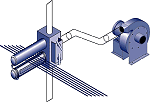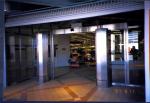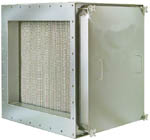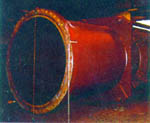
CB Blowers
---------- HVAC
-----------
CB Blowers offers a variety of industrial, process and
commercial heating, ventilation and air conditioning products for
virtually any HVAC application:
Electric Gas Heaters
- Capacities to 1000 kW, 40 kW/ft2
- (3) Electric elements types: open element,
tubular element, finned element
- Various mounting types: Slip-In, Flanged, Round
Collar
- A superior quality with very reasonable
cost
- Low maintenance - no serviceable
components
- Horizontal or vertical duct installation
- Capacities above 1000 kW - on application
|
|
|
Air Systems
- High-penetration air knife blowers
- Laminar flow air curtain fans
- Tangential blowers
- Air gates
- Air screens
- Air circulation fan systems
- Material handling blower systems
|
|
|



|









